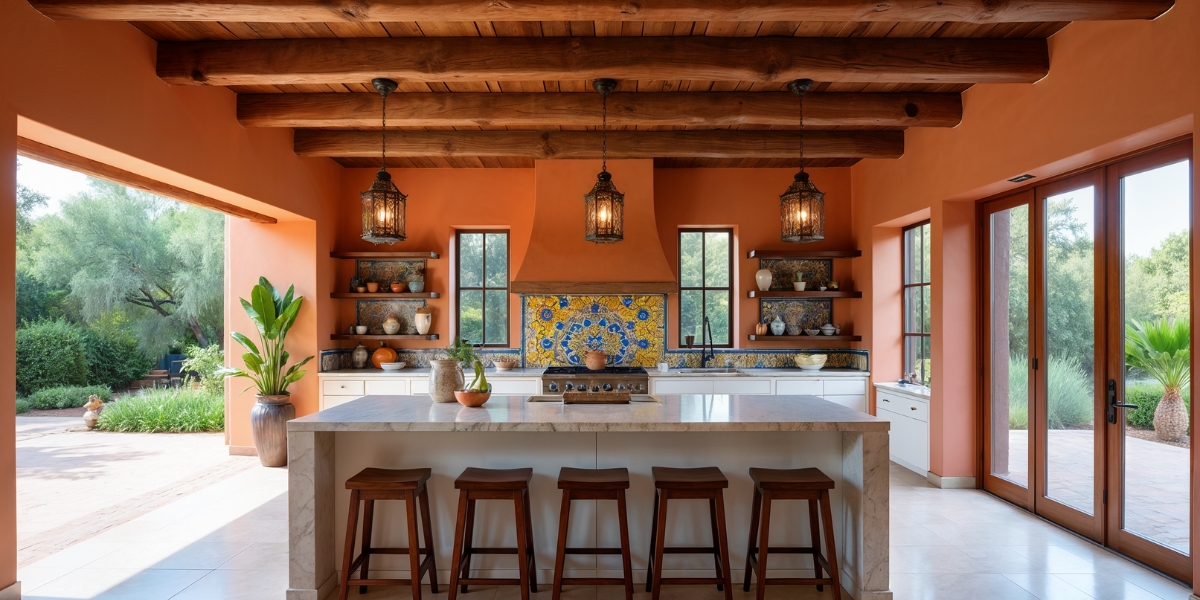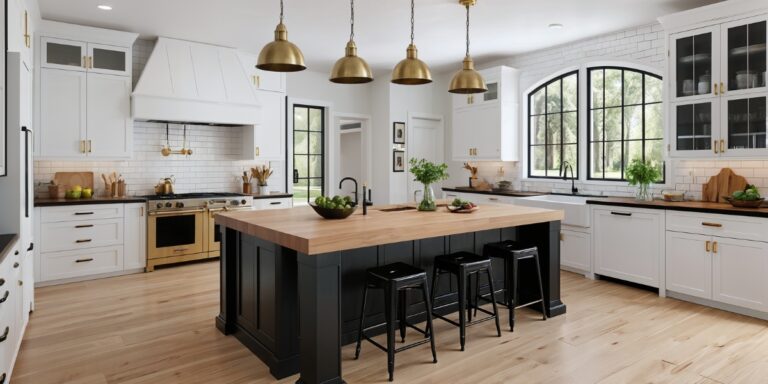In my experience working with homeowners on kitchen renovations that incorporate Mexican and Spanish colonial influences, I’ve observed that modern hacienda-style kitchens often achieve remarkable balance between traditional craftsmanship and contemporary functionality. Through various projects, I’ve learned that this design approach typically creates warm, inviting spaces that honor cultural heritage while meeting modern cooking and entertaining needs.
Note: For any electrical work, plumbing installations, structural modifications, or major appliance installations mentioned in this article, always consult with licensed professionals to ensure safety, code compliance, and proper installation.
What makes modern hacienda kitchen design particularly appealing is its ability to integrate authentic Mexican materials and techniques with contemporary appliances and layouts. I’ve found that homeowners often choose this approach because it typically creates distinctive, character-rich kitchens while maintaining the functionality essential for modern cooking and entertaining.
The key to successful modern hacienda kitchen design often lies in thoughtfully balancing traditional elements like handcrafted tiles, natural materials, and wrought iron with contemporary features like efficient layouts, modern appliances, and clean lines. Effective designs typically celebrate Mexican craftsmanship while ensuring practical functionality for daily use.
Here are 15 modern hacienda kitchen design concepts that often work well in various home styles and budgets, based on observations from numerous culturally inspired kitchen renovation projects.
1. Earth-Tone Color Integration: Warm Natural Palettes
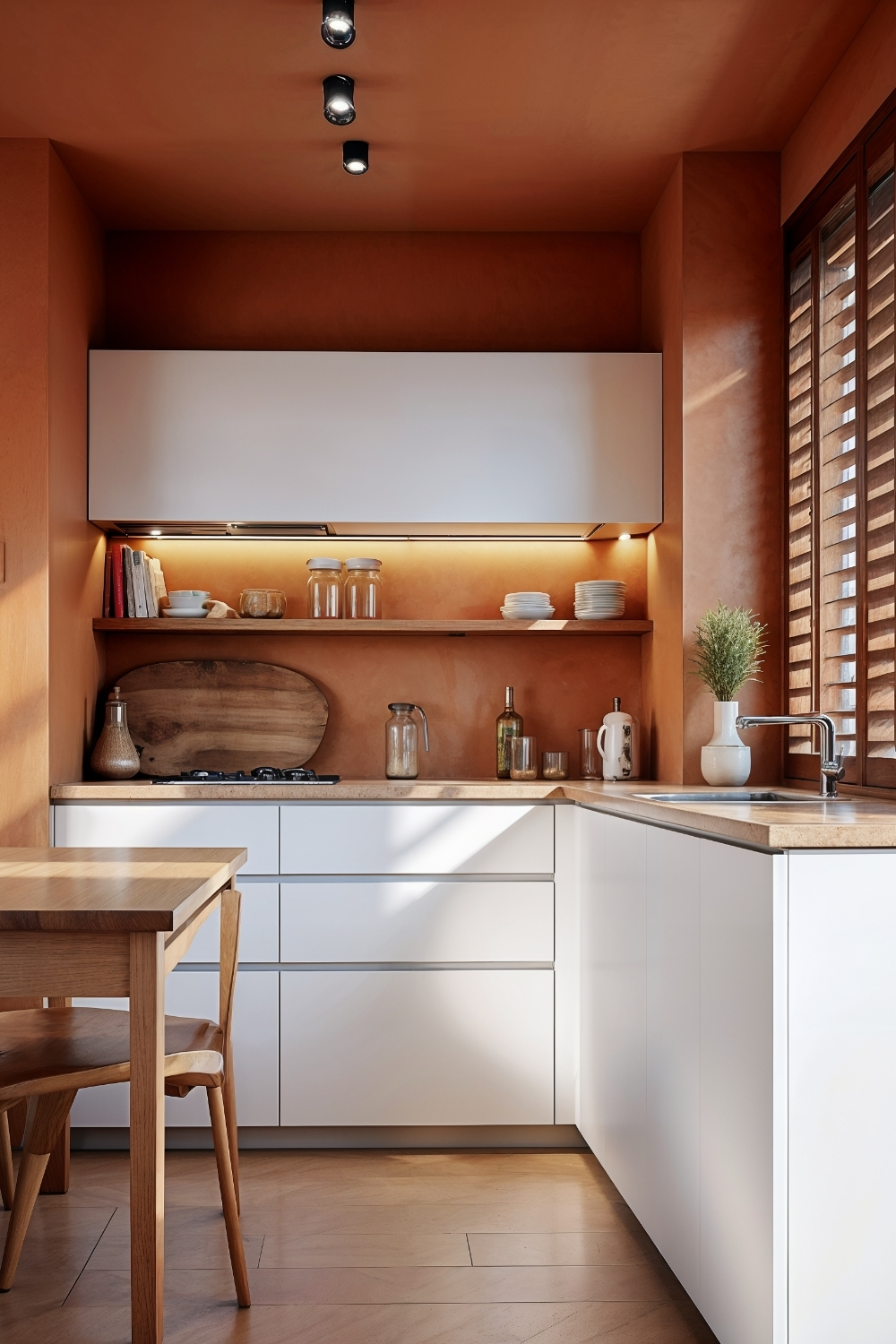
This color approach often appeals to homeowners seeking grounding, welcoming kitchen environments. Earth tones like terracotta, caramel, and ochre combined with clean white or cream cabinetry typically create balanced, inviting spaces without overwhelming modern elements.
Design consideration: Natural color palettes often work best when balanced with neutral elements, while warm tones typically need adequate lighting to prevent spaces from feeling dark or closed-in.
Practical benefit: Earth-tone schemes often age gracefully and coordinate easily with changing décor, while natural colors typically create timeless appeal that maintains property value over decades.
2. Exposed Beam Enhancement: Structural Character Display
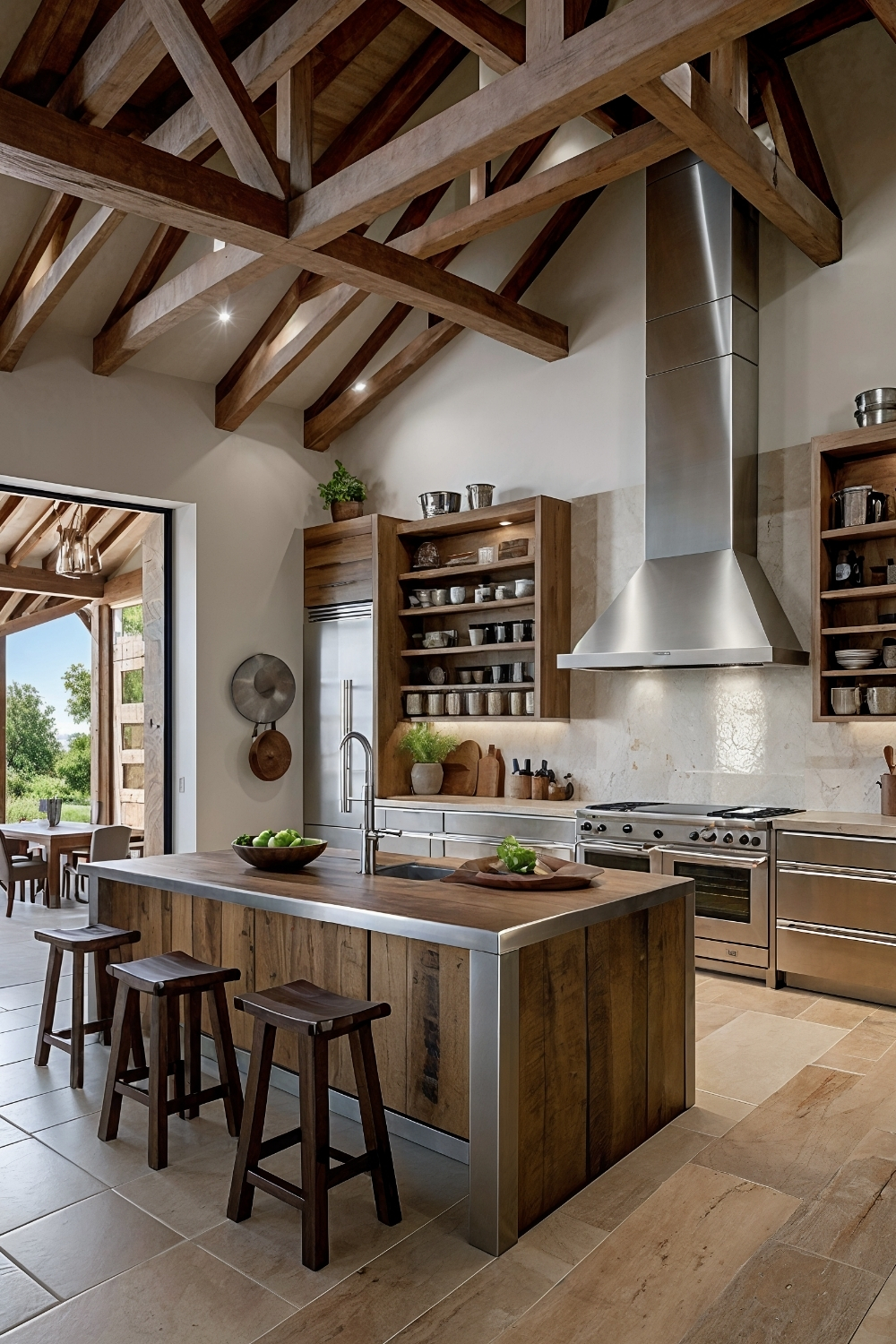
This architectural approach often appeals to homeowners wanting authentic rustic character. Exposed wooden beams, particularly reclaimed wood, combined with modern appliances and lighting typically create striking visual contrast while adding architectural interest.
Design consideration: Exposed beams often require proper structural assessment and treatment for moisture and pest resistance, while recessed lighting integration typically needs professional electrical planning.
Practical benefit: Structural beam exposure often reduces construction costs, while authentic wood elements typically increase property character and market appeal significantly.
3. Handcrafted Tile Integration: Artistic Backsplash Features
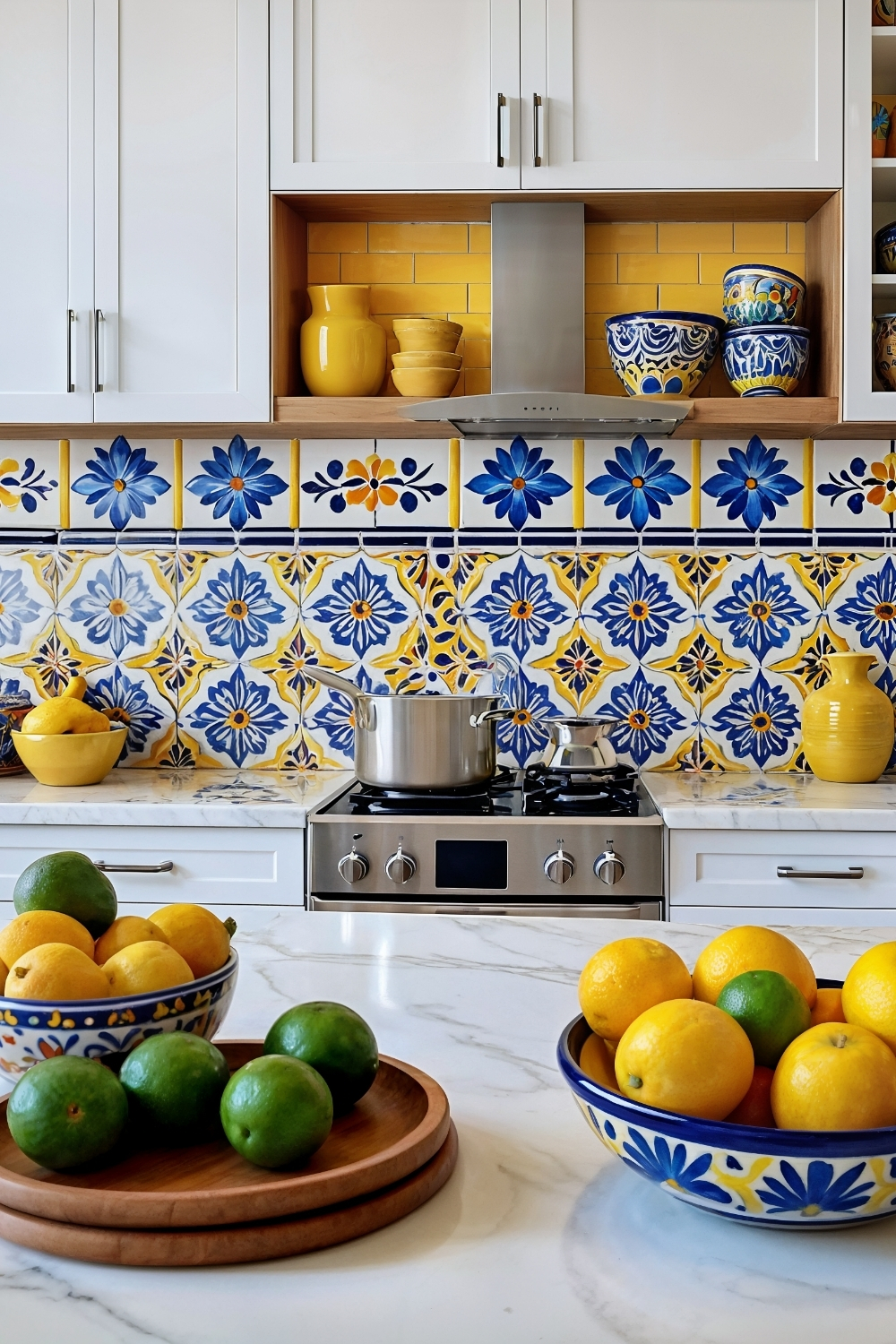
This decorative strategy often appeals to homeowners appreciating traditional Mexican artistry. Talavera tiles with hand-painted patterns paired with modern countertops typically create stunning focal points while honoring cultural craftsmanship.
Design consideration: Authentic handcrafted tiles often require specialized installation and sealing, while bold patterns typically need careful coordination with other design elements to avoid visual chaos.
Practical benefit: Quality tile installations often provide durable, easy-to-clean surfaces, while artistic elements typically create unique, irreplaceable character that reflects cultural appreciation.
4. Open Display Storage: Functional Artisan Showcases
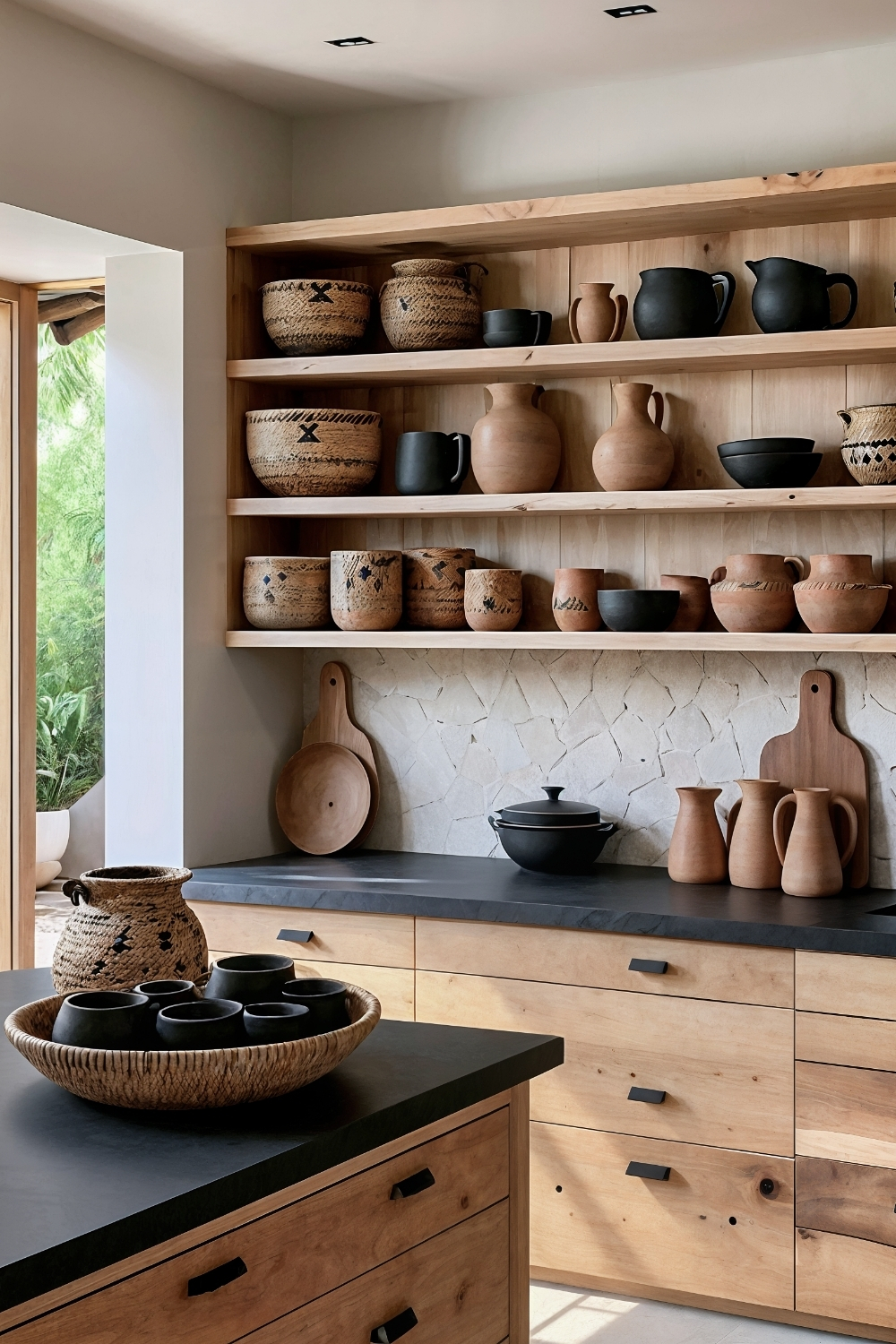
This organization approach often appeals to homeowners wanting to display cultural artifacts and handcrafted items. Open shelving combined with Mexican pottery, baskets, and ceramics typically provides both storage and decorative elements.
Design consideration: Open shelving often requires regular maintenance and organization, while displayed items typically need protection from cooking grease and moisture in active kitchen areas.
Practical benefit: Display storage often creates more accessible organization, while cultural artifacts typically provide conversation value and educational opportunities for families and guests.
5. Iron Accent Integration: Traditional-Modern Metal Balance
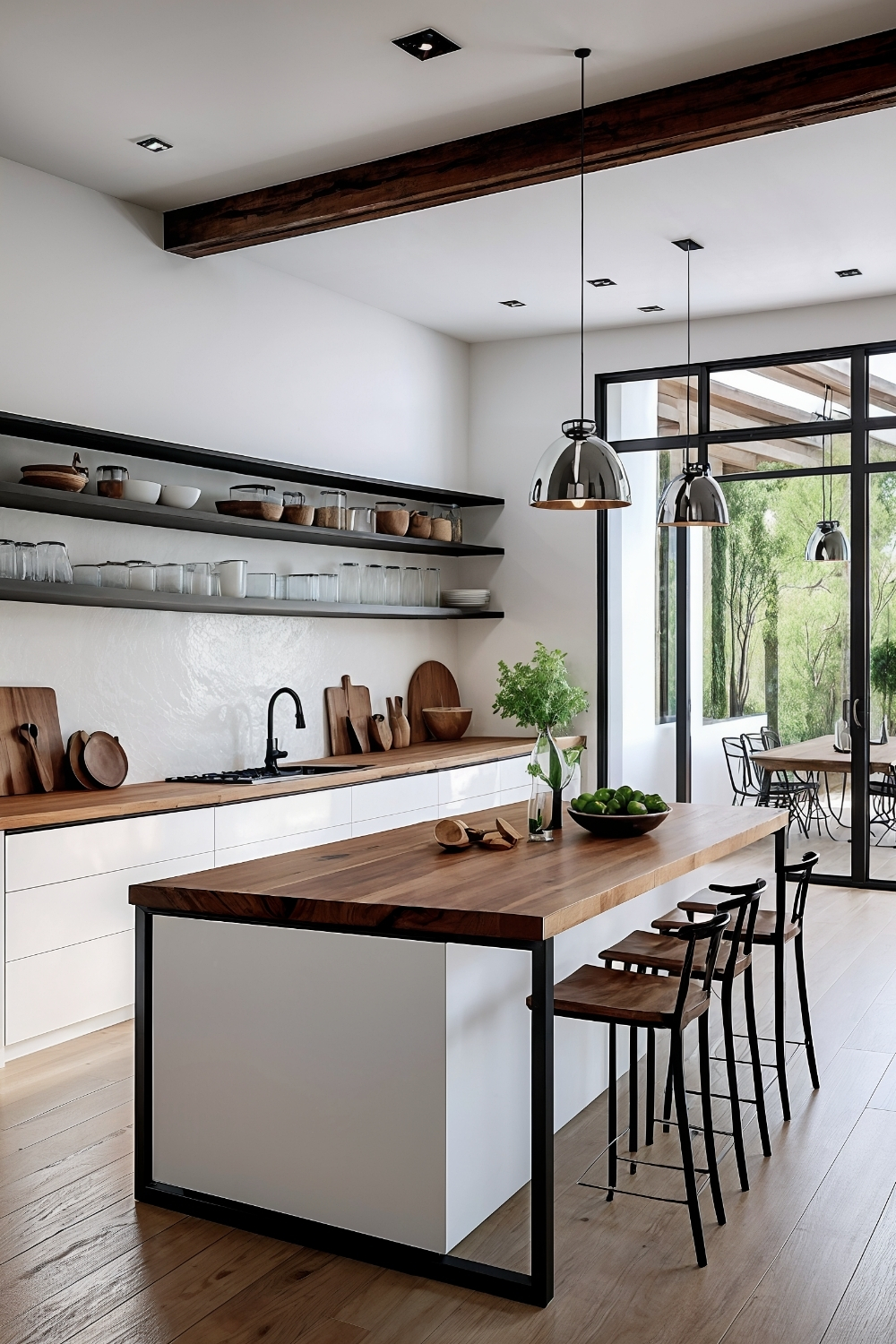
This material approach often appeals to homeowners seeking authentic Mexican design elements. Wrought iron fixtures and hardware combined with contemporary finishes typically create sophisticated contrast while maintaining cultural authenticity.
Design consideration: Wrought iron elements often require regular maintenance to prevent rust, while custom metalwork typically needs skilled artisans for authentic appearance and proper installation.
Practical benefit: Quality ironwork often provides exceptional durability, while traditional elements typically create distinctive character that cannot be replicated with mass-produced alternatives.
6. Vertical Space Enhancement: Dramatic Ceiling Treatments
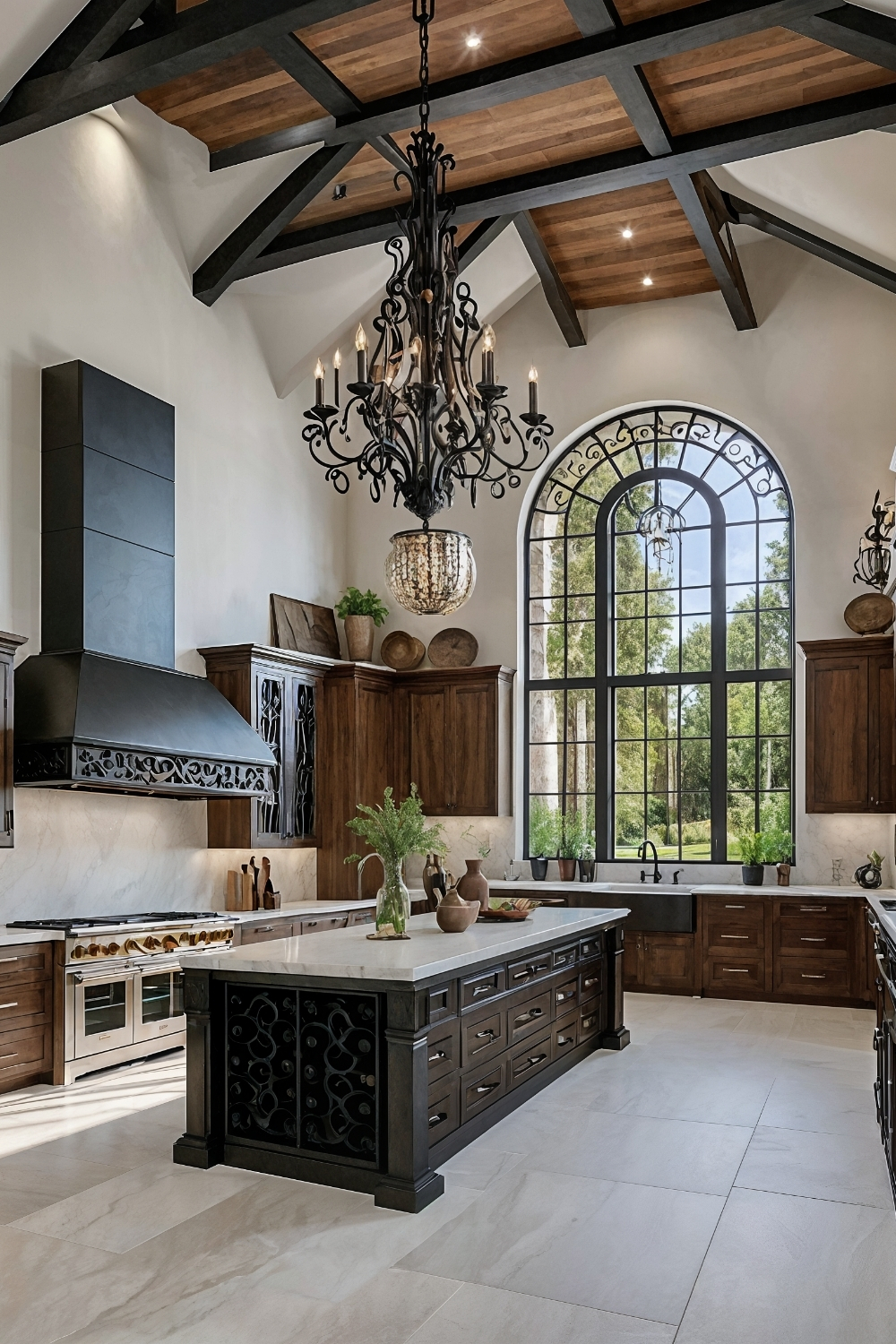
This spatial strategy often appeals to homeowners with high ceilings wanting to emphasize architectural grandeur. Statement chandeliers with traditional materials combined with modern lighting systems typically create impressive focal points.
Design consideration: Large-scale fixtures often require adequate structural support and professional installation, while dramatic lighting typically needs dimmer controls for functional versatility.
Practical benefit: Impressive ceiling treatments often increase perceived space, while statement lighting typically provides both functional illumination and decorative impact.
7. Handcrafted Cabinetry Systems: Authentic Wood Character
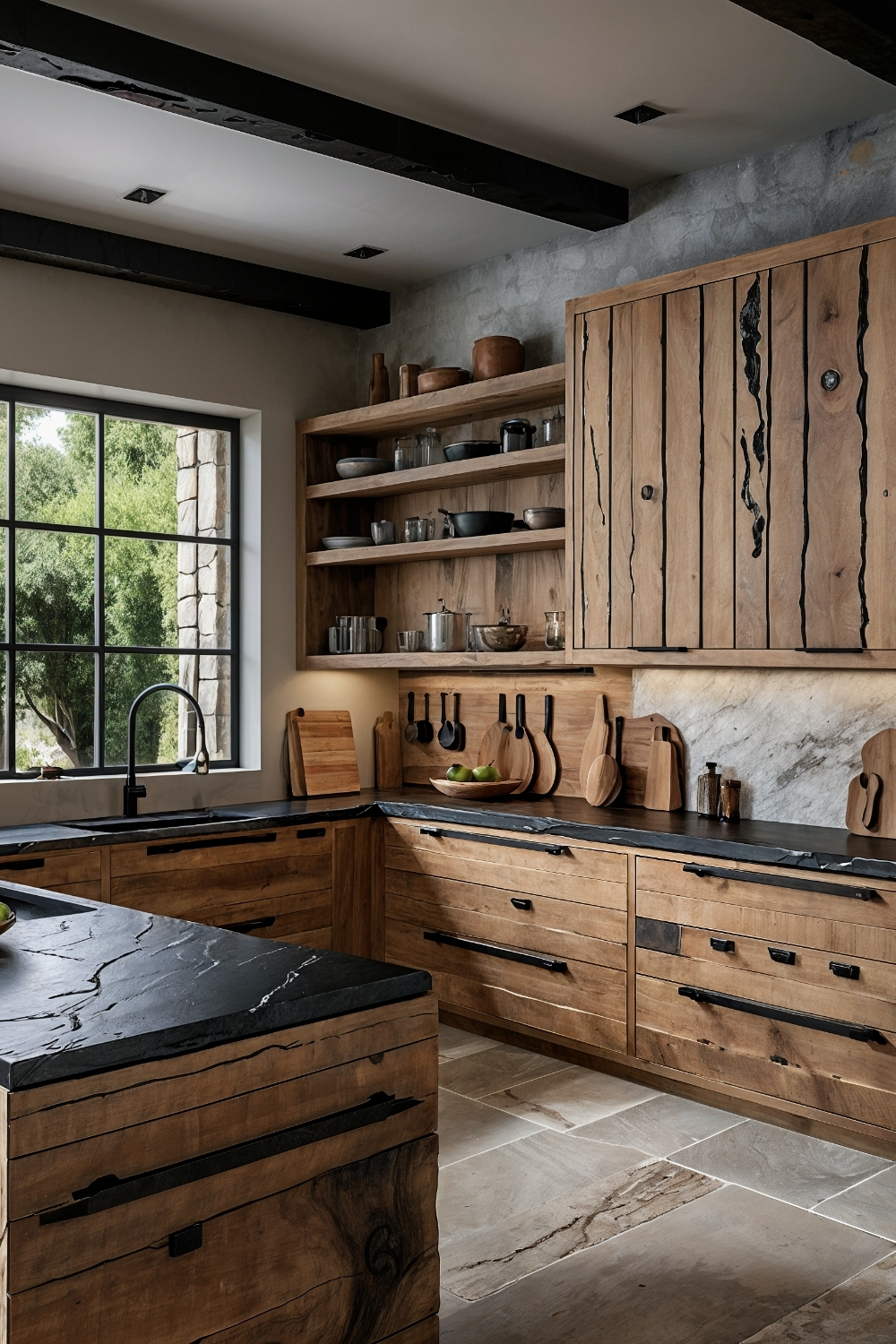
This storage approach often appeals to homeowners prioritizing traditional craftsmanship. Distressed or handmade wooden cabinets with contemporary hardware typically provide authentic character while maintaining modern functionality.
Design consideration: Handcrafted cabinetry often requires skilled artisans and extended timelines, while wood finishes typically need appropriate sealing for kitchen moisture and heat exposure.
Practical benefit: Custom woodwork often provides better storage solutions, while authentic craftsmanship typically increases property value through distinctive, irreplaceable character.
8. Floor Pattern Integration: Artistic Foundation Elements
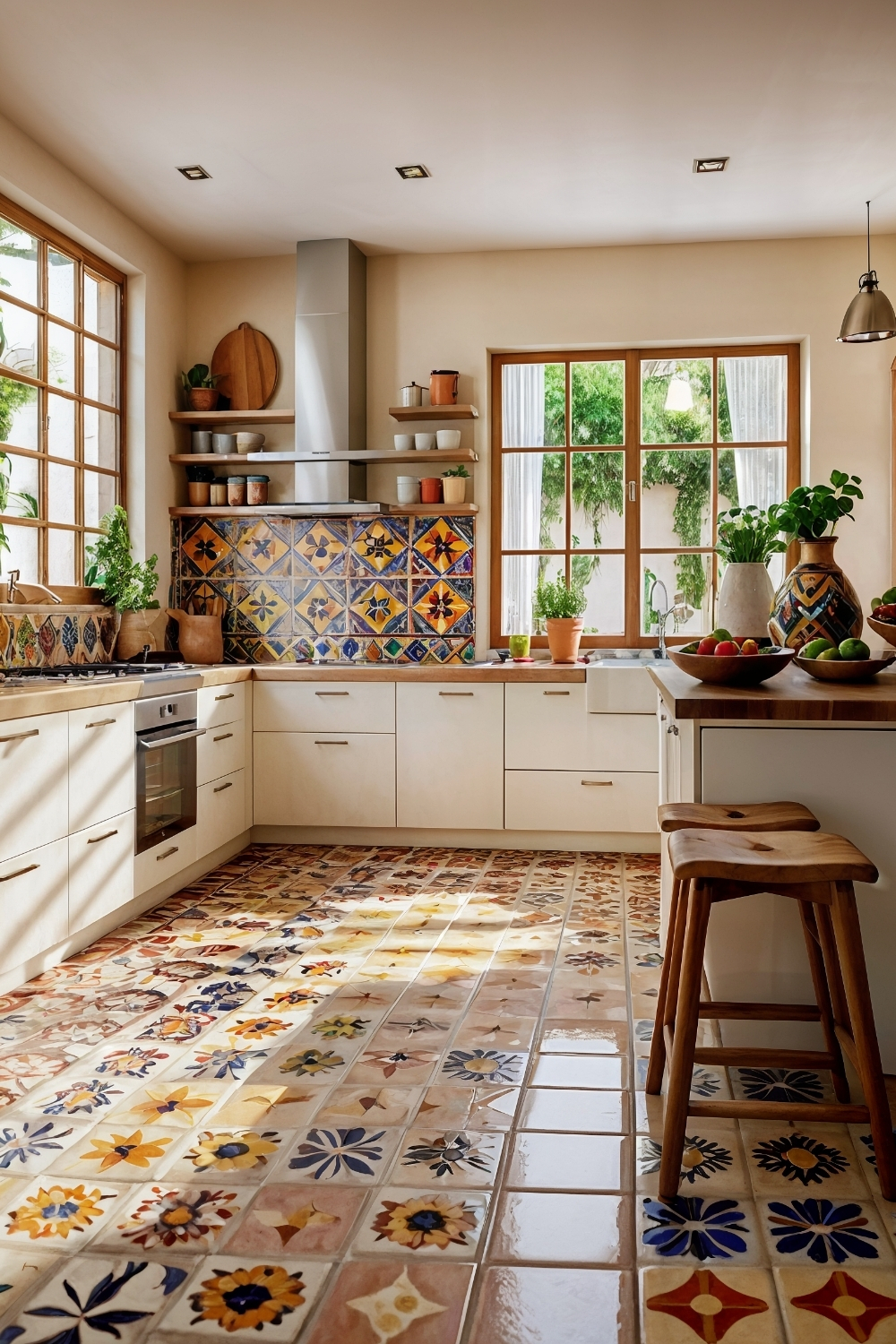
This design strategy often appeals to homeowners wanting dramatic visual impact. Colorful Mexican floor tiles with bold patterns balanced by neutral walls typically create stunning foundations while maintaining visual balance.
Design consideration: Patterned flooring often requires careful measurement and professional installation, while bold designs typically need coordination with other decorative elements to prevent overwhelming effects.
Practical benefit: Quality tile flooring often provides excellent durability, while artistic patterns typically create unique character that distinguishes homes from standard designs.
9. Contemporary Surface Materials: Modern-Traditional Fusion
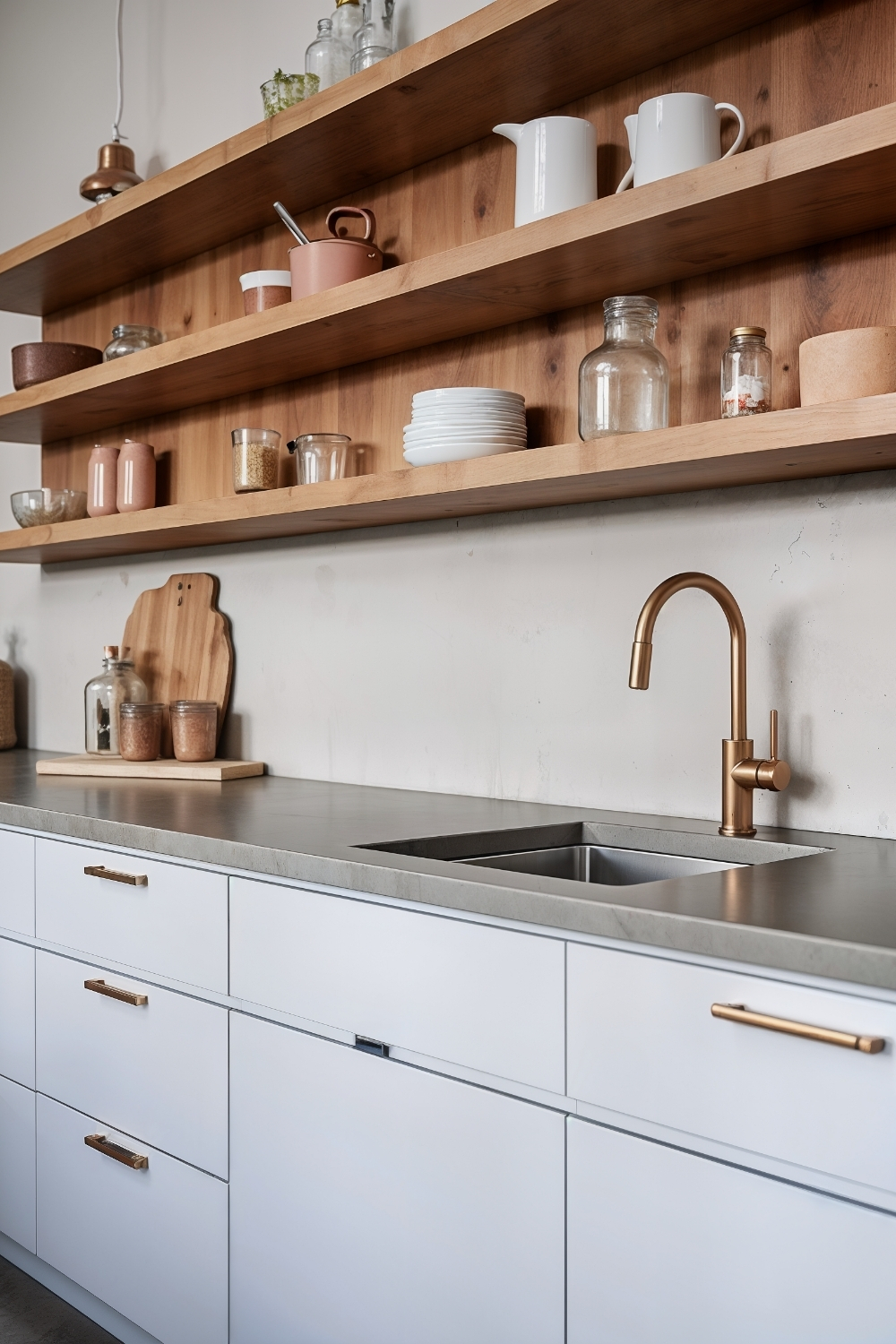
This material approach often appeals to homeowners seeking sleek functionality with rustic accents. Concrete countertops paired with handcrafted elements typically create sophisticated contrast while maintaining cultural references.
Design consideration: Concrete surfaces often require proper sealing and maintenance, while material combinations typically need professional installation for proper adhesion and weatherproofing.
Practical benefit: Modern surface materials often provide superior durability, while traditional accents typically maintain authentic character that honors cultural heritage.
10. Copper Element Integration: Warm Metal Accents
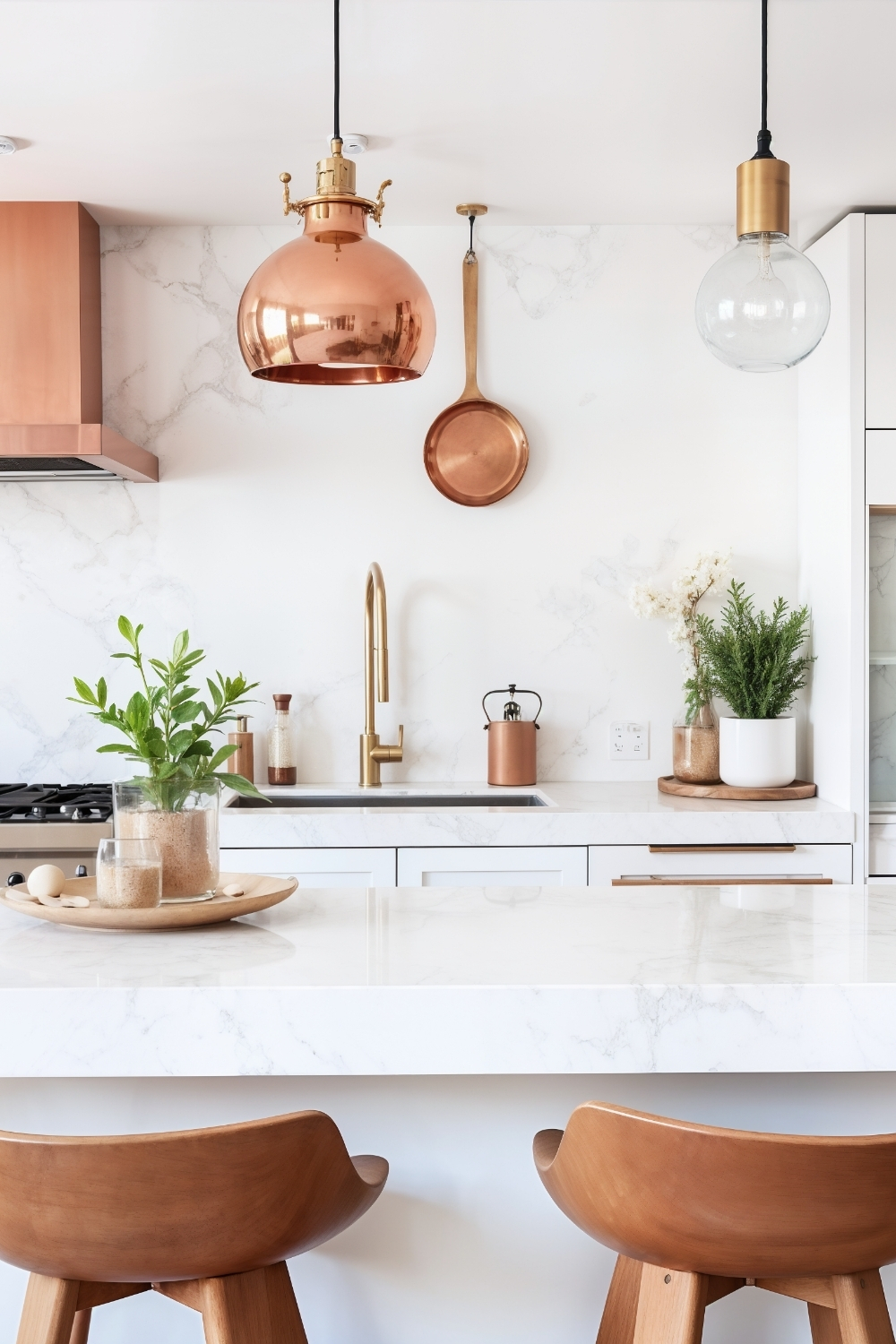
This material strategy often appeals to homeowners appreciating traditional Mexican metalwork. Copper sinks, fixtures, or accents combined with polished finishes typically create luxurious yet earthy environments.
Design consideration: Copper elements often require specific maintenance to preserve appearance, while metal combinations typically need consideration of galvanic corrosion and compatibility issues.
Practical benefit: Quality copper installations often develop attractive patina over time, while traditional materials typically provide unique character that improves with age.
11. Architectural Curve Integration: Flowing Spatial Design
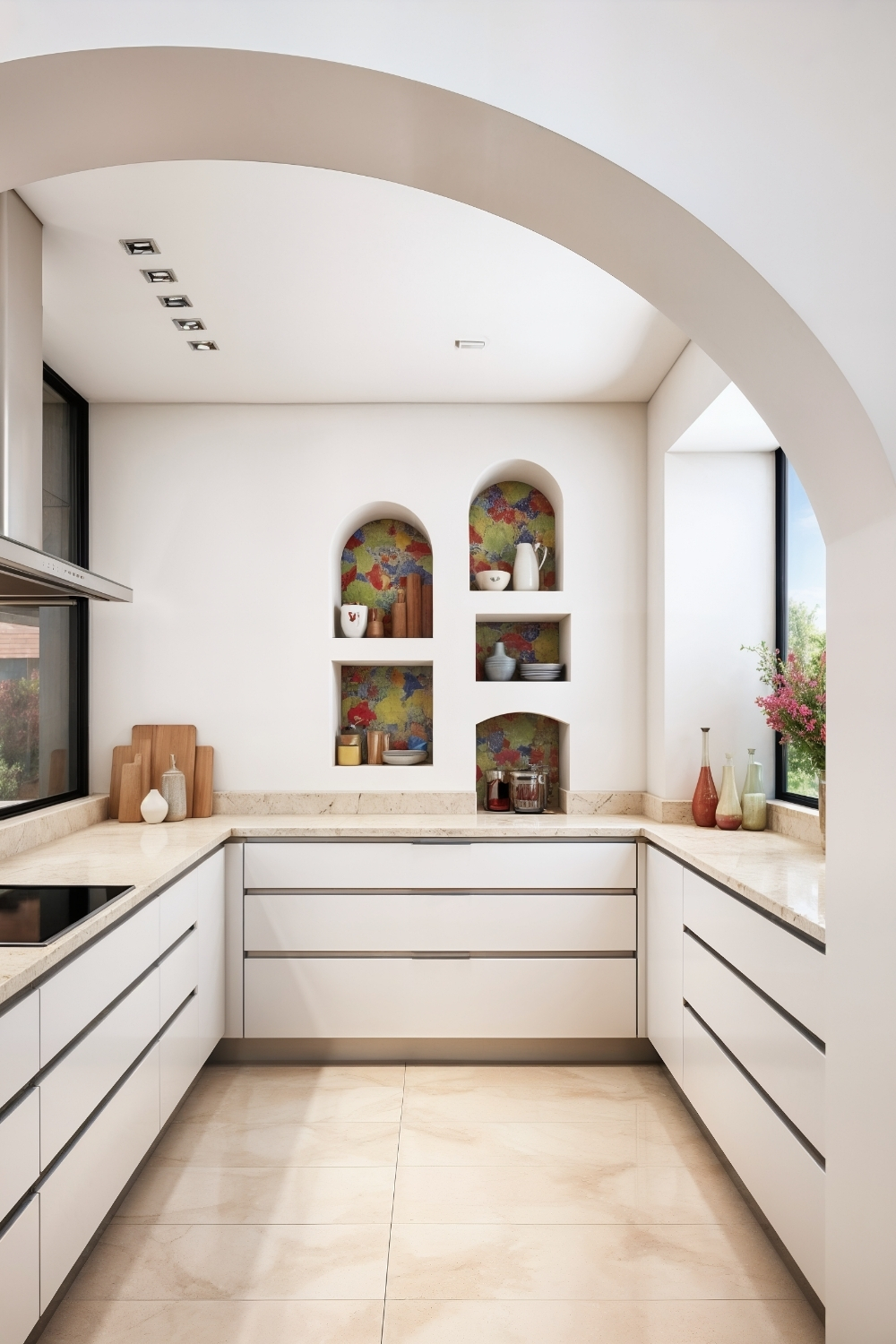
This structural approach often appeals to homeowners seeking organic, traditional Mexican architectural elements. Arched openings and curved alcoves with modern lighting typically create flowing, graceful transitions.
Design consideration: Curved construction often requires specialized framing and finishing techniques, while architectural modifications typically need professional structural evaluation and permits.
Practical benefit: Curved elements often create more interesting spatial flow, while traditional architectural features typically increase property uniqueness and market appeal.
12. Textile Accent Integration: Cultural Pattern Elements
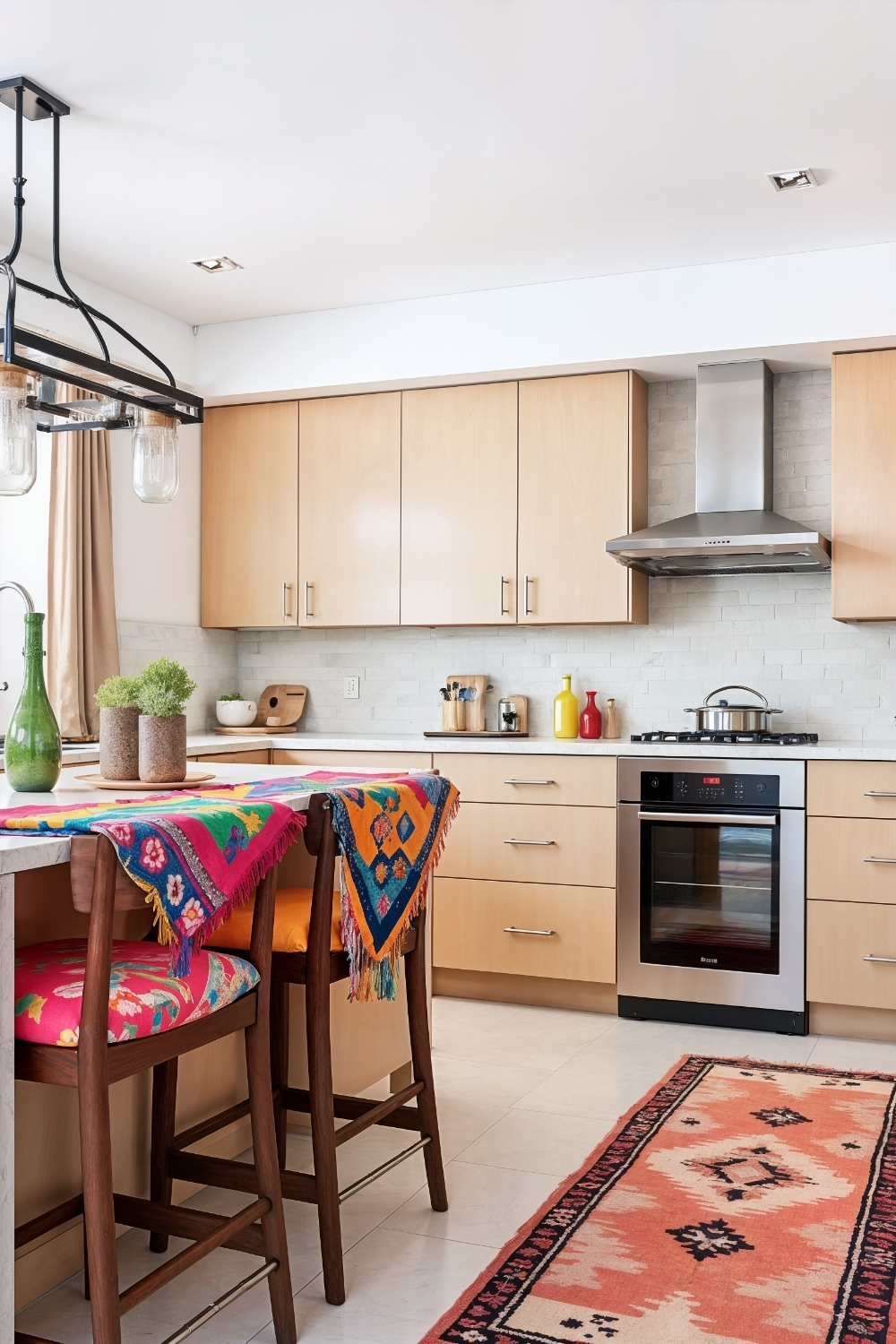
This decorative approach often appeals to homeowners wanting authentic Mexican character without major renovations. Handwoven textiles, patterned cushions, and traditional fabrics typically add cultural warmth through easily changeable elements.
Design consideration: Kitchen textiles often need frequent washing and replacement due to cooking conditions, while authentic materials typically require special care to preserve colors and patterns.
Practical benefit: Textile accents often provide affordable design updates, while cultural patterns typically create educational opportunities and conversation topics for residents and guests.
13. Brick Wall Enhancement: Textural Background Elements
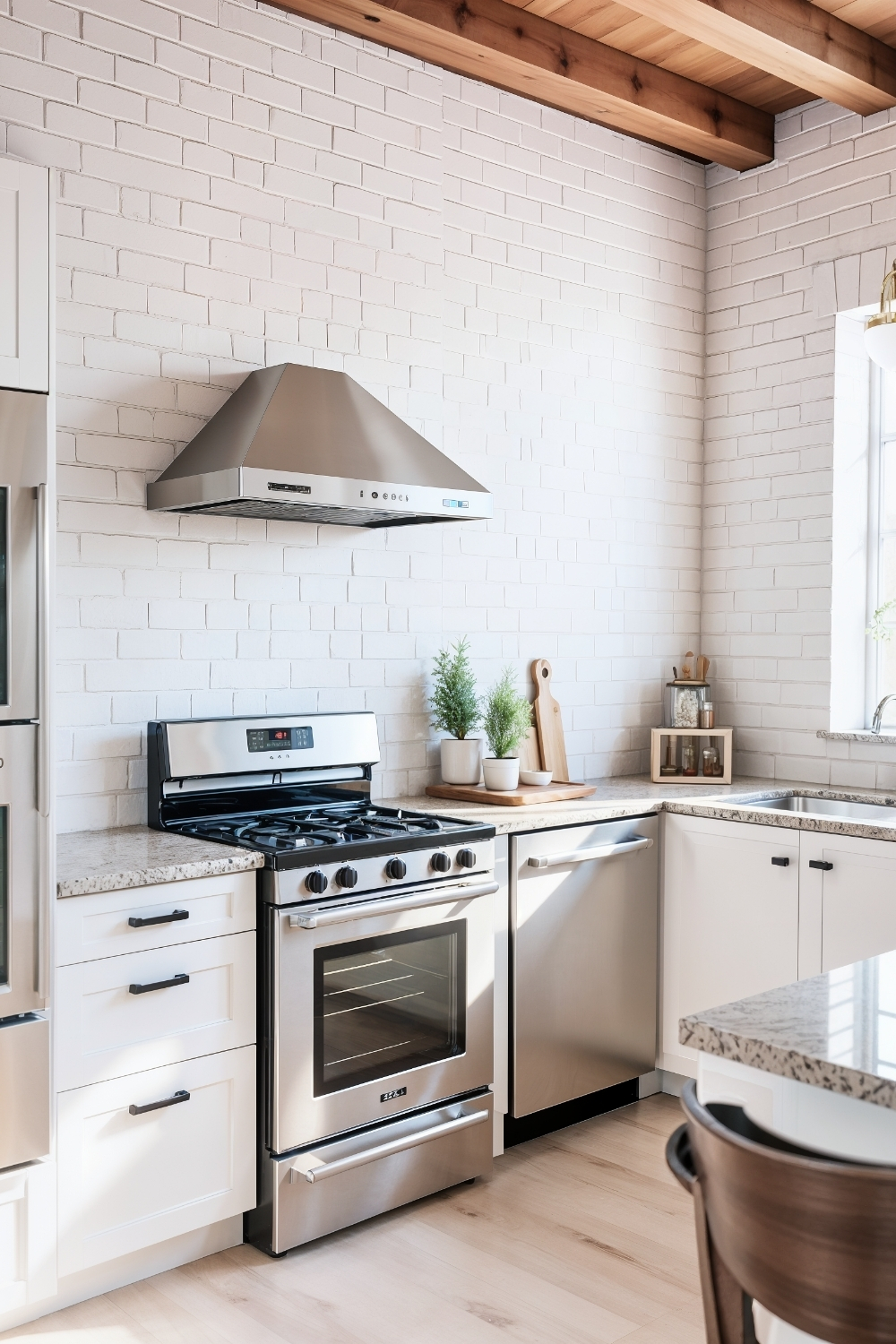
This architectural treatment often appeals to homeowners seeking rustic character. Exposed or whitewashed brick walls combined with modern appliances typically create interesting textural contrast while maintaining contemporary functionality.
Design consideration: Exposed brick often requires sealing to prevent dust and maintenance issues, while wall treatments typically need coordination with electrical and plumbing installations.
Practical benefit: Brick elements often provide excellent durability, while textural walls typically create architectural interest that distinguishes spaces from standard smooth finishes.
14. Layered Lighting Systems: Traditional-Modern Illumination
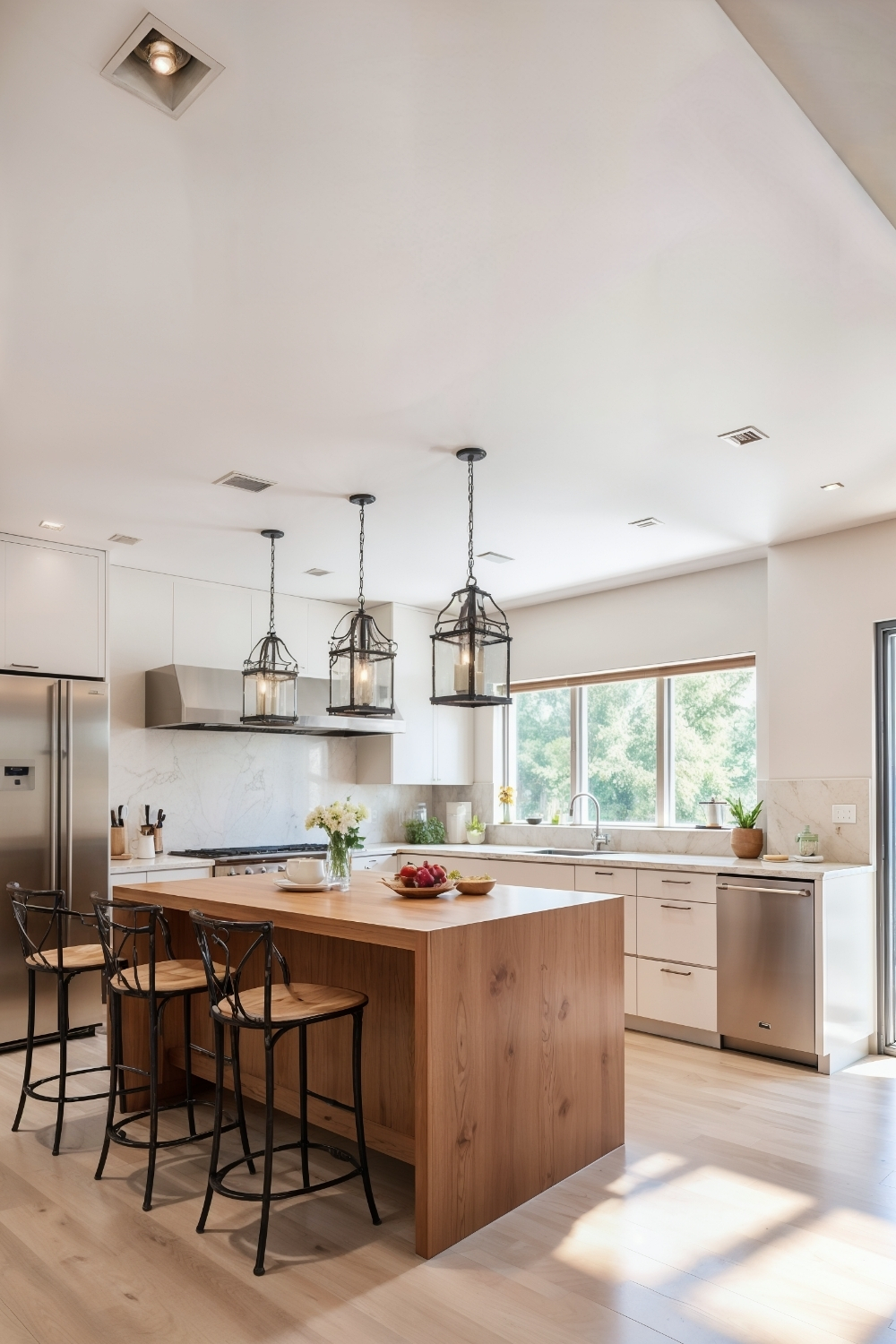
This lighting strategy often appeals to homeowners seeking both functional and atmospheric illumination. Traditional lanterns combined with contemporary recessed lighting typically provide versatile lighting for different activities and moods.
Design consideration: Mixed lighting systems often require complex electrical planning, while traditional fixtures typically need professional installation to ensure safety and proper function.
Practical benefit: Layered lighting often improves kitchen functionality, while atmospheric elements typically create more enjoyable cooking and entertaining experiences.
15. Indoor-Outdoor Connection: Natural Living Integration
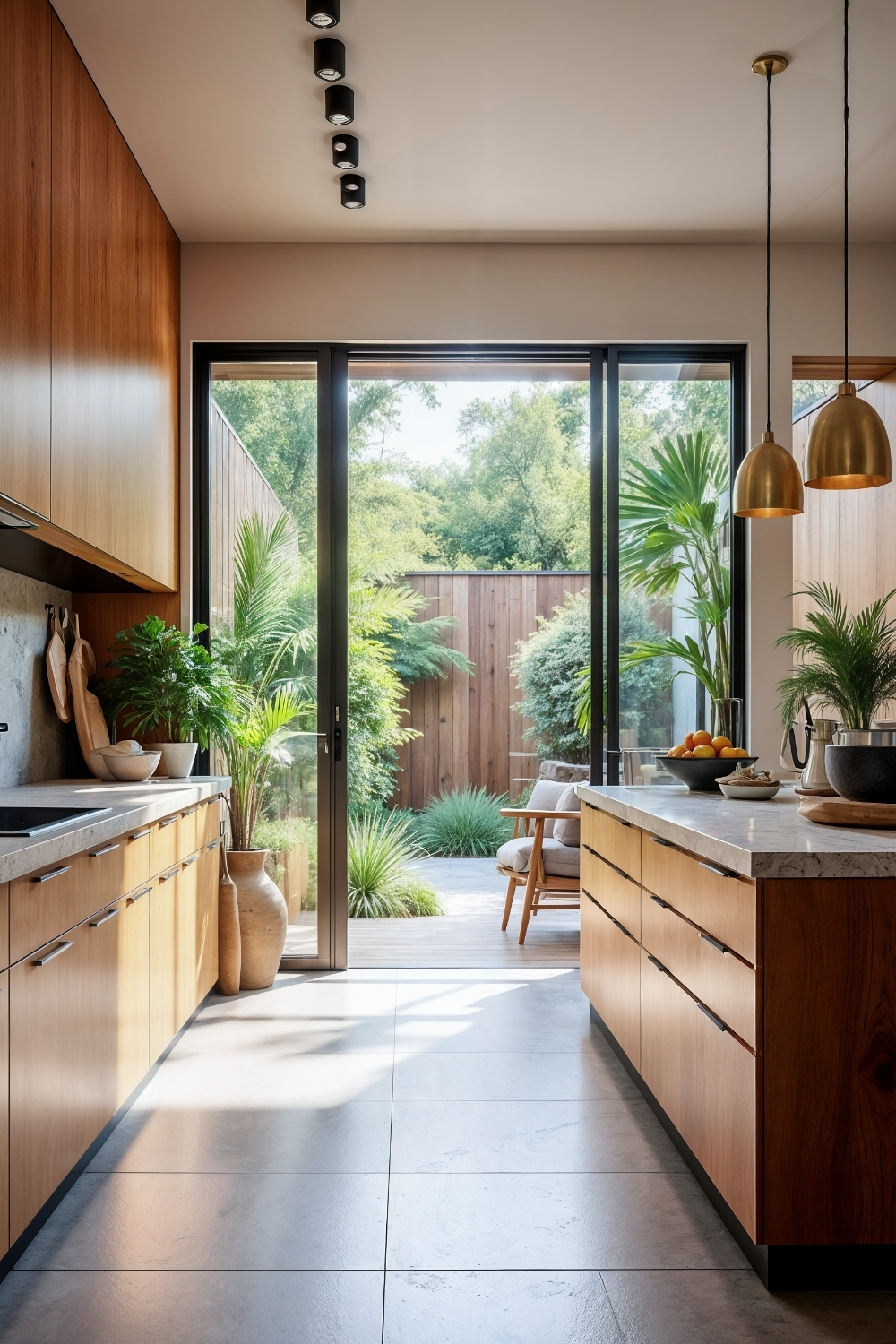
This spatial philosophy often appeals to homeowners seeking seamless environment transitions. Large windows, natural materials, and garden connections typically create expanded living spaces that blur interior-exterior boundaries.
Design consideration: Indoor-outdoor integration often requires weatherproofing and climate control planning, while natural materials typically need appropriate treatment for varying environmental conditions.
Practical benefit: Connected spaces often increase functional living area, while natural integration typically provides psychological benefits and improved daily living experiences.
Creating Your Modern Hacienda Kitchen
Understanding these design principles often helps homeowners create kitchens that successfully balance Mexican cultural elements with contemporary functionality and efficiency. Effective implementations typically start with authentic material selection and skilled craftsmanship, then integrate modern appliances and systems for optimal performance.
Successful modern hacienda kitchen projects often prioritize quality traditional elements while ensuring designs meet current cooking needs and building standards. The result typically creates distinctive, culturally rich environments that honor Mexican heritage while providing exceptional functionality for modern families.
When planning your hacienda-style kitchen renovation, consider how these elements work together to create cohesive designs that reflect both cultural appreciation and practical cooking needs. The most effective designs often balance authentic craftsmanship with contemporary efficiency while ensuring long-term durability and maintenance ease.
Remember: For any electrical work, plumbing installations, structural modifications, or major appliance connections related to hacienda kitchen renovations, always consult with licensed professionals including contractors, electricians, and plumbers to ensure proper installation, safety compliance, and adherence to local building codes.

